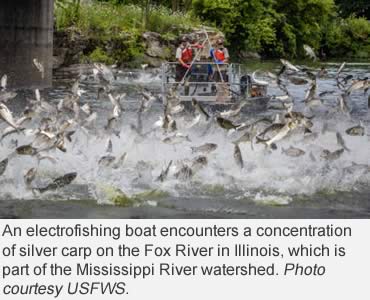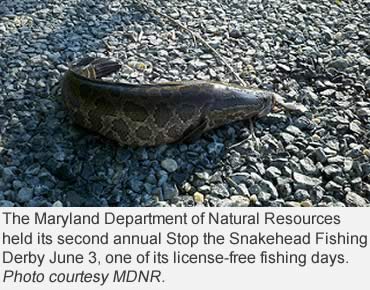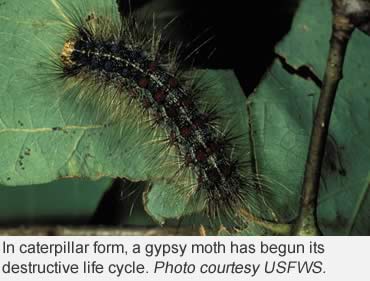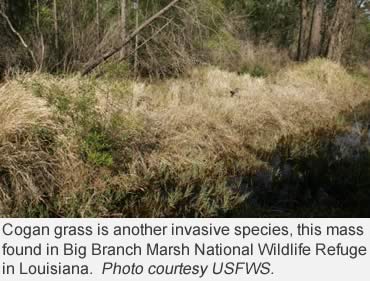Photo: Starlings have been in America since 1890, so long that we don’t realize they are an invasive species.
The stories arrive from the East Coast or the West, from the Great Lakes states, or the arid lands of the Southwest and the humid areas in the South. And what these stories have in common is one thing—America is being invaded!
What? You didn’t notice? Look outside. There are plants, animals and fish that have found new homes and have reproduced in the American landscape without natural predators or deterrents to keep their numbers in check.
The U.S. Fish and Wildlife Service identifies invasive species as those not native to an ecosystem that cause, or are likely to cause, economic or environmental harm, or harm to human health.
While many invasive species arrive from outside the U.S on ships and planes, or may have once been someone’s pets that grew too big and were released in the wild, there are other species from within the U.S. that are invasive because they’ve relocated to a different part of the country.
 That beautiful flock of Canadian geese flying overhead become annoying when they move to a warmer neighborhood and stay for breakfast, lunch and dinner year round, but there are things you can do. Here’s one suggestion.
That beautiful flock of Canadian geese flying overhead become annoying when they move to a warmer neighborhood and stay for breakfast, lunch and dinner year round, but there are things you can do. Here’s one suggestion.
Like geese, the European starling has been invasive for generations (since 1890), and many believe they have always been here because they’ve witnessed the massive flocks in spring or fall as long as they remember. Read more about starlings here.
States like Florida have intensive programs to identify and combat invasives of all sorts—from Cuban tree frogs and green iguanas, to Burmese pythons. The Fish and Wildlife Commission asks folks to become citizen scientists to help manage nonnative species, and report sightings and locations through its Exotic Specials Reporting hotline.
In Illinois, where silver carp have been found nine miles from Lake Michigan, biologists fear the fast-growing and aggressive fish and will bypass intensive monitoring efforts and become established in Lake Michigan. At risk? All native species of fish. Officials also ask commercial and recreational fishermen to monitor waters. To understand more about those efforts, click here.
 Meanwhile, on June 5 in Mississippi, two fishermen caught a Northern Snakehead Fish in Lake Whittington, an oxbow lake of the Mississippi River in Bolivar County. Bow fishermen Brad Baugh and Bubba Steadman, who caught the snakehead, kept it, photographed it, and immediately contacted the Mississippi Department of Wildlife, Fisheries and Parks to report their alarming discovery.
Meanwhile, on June 5 in Mississippi, two fishermen caught a Northern Snakehead Fish in Lake Whittington, an oxbow lake of the Mississippi River in Bolivar County. Bow fishermen Brad Baugh and Bubba Steadman, who caught the snakehead, kept it, photographed it, and immediately contacted the Mississippi Department of Wildlife, Fisheries and Parks to report their alarming discovery.
"Snakeheads have been present in the White River Basin in Arkansas since 2008 and have been steadily expanding their range toward the Mississippi River,” says Delta fisheries biologist Nathan Aycock. The freshwater fish, native to China, Russia and Korea, also has been found in Maryland, New York, Pennsylvania and Virginia where their impact on native fish populations are unknown.
In Mississippi, the Wildlife, Fisheries and Parks encourages anyone who thinks they caught a snakehead to keep it (freeze it), photograph it, and call (601)432-2200. But if you’re not in Mississippi and catch a snakehead fish, report it by contacting the nearest fish and game agency or the US Fish and Wildlife Service at (703)358-2148.
 Meanwhile in Texas, invasive zebra mussels were positively identified for the first time June 22 on Lake Travis in the Colorado River basin in central Texas. “This is pretty disheartening for us . . . who work to prevent this invasive species from spreading,” said Monica McGarrity, Aquatic Invasive Species team leader with the Parks and Wildlife Department.
Meanwhile in Texas, invasive zebra mussels were positively identified for the first time June 22 on Lake Travis in the Colorado River basin in central Texas. “This is pretty disheartening for us . . . who work to prevent this invasive species from spreading,” said Monica McGarrity, Aquatic Invasive Species team leader with the Parks and Wildlife Department.
The next step is to educate the public. “Public awareness goes a long way in helping the effort to keep zebra mussels from spreading,” Brian Van Zee, inland fisheries regional director added. Learn more about how to combat Zebra mussels here.
In Minnesota, known as the land of 10,000 lakes, the battle with Zebra mussels is real and ongoing.
“Clean, Drain, Dispose is the law in Minnesota, because it’s an effective way of preventing the spread of aquatic invasive species,” said Heidi Wolf, Department of Natural Resources invasive species coordinator. “These simple steps help protect your waters from invasive species and the environmental, recreational and economic harm they can cause."
In Wisconsin, forests and backyards have been invaded by the gypsy moth—a destructive pest that feeds on oak, aspen, crabapple, birch and hundreds of other trees. Currently, gypsy moth aerial treatments by the Wisconsin Department of Agriculture are underway. Trees in Grant and Crawford counties have been treated with an organic mating disruption product, and seven other counties will also be treated. For more information click here.
 Japanese beetles and the Emerald Ash Borer (EAB) are two invasive insects that are wreaking havoc on Missouri’s plants and trees. (Psst, they are also found in other states besides Missouri.)
Japanese beetles and the Emerald Ash Borer (EAB) are two invasive insects that are wreaking havoc on Missouri’s plants and trees. (Psst, they are also found in other states besides Missouri.)
The beetles were first discovered in North America in 1916, most likely imported from Asia in potted plants. Japanese beetles are leaf skeletonizers, feeding on the upper surface of leaves and leaving behind a lacy network of leaf veins.
Ash trees are the main diet for Emerald Ash Borers. “This species doesn’t congregate in large masses like Japanese beetles,” says Missouri Department of Conservation forest entomologist Robbie Doerhoff. “It can be difficult to actually see an EAB, even in areas where the population is high, because they will be feeding and mating in a tree’s canopy.”
The challenges to combat invasive species are so sizeable, Invasive.org categorizes all the species where you can find the invasive species most common to your state, whether it is plant, insect, pathogen, or wildlife.
The first step in facing the invasive challenge may be to simply understand its enormous scope. The second is to join the army of citizen scientists and everyday hunting and fishing conservationists to report what you find to the fish and game official in your area.